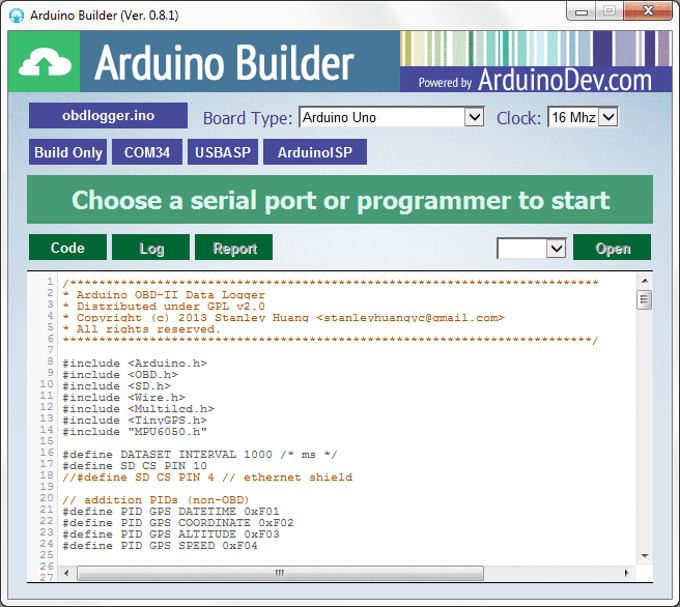Arduino Serial Parse Hex


Arduino boards such as the Uno, MEGA2560 and Due all have a serial port that connects to the USB device port on the board. This port allows sketches to be loaded to the board using a USB cable. Code in a sketch can use the same USB / serial port to communicate with the PC by using the Arduino IDE Serial Monitor window, or a Processing application for example. The USB port appears as a virtual COM port on the PC.This article shows how to use Arduino serial ports when additional serial ports are needed for a project. Arduino Serial Ports AvailableThe serial port for programming the Arduino mentioned above is a hardware serial port. The microcontroller on the Arduino board has a hardware serial port built-in, so that after the port has been initialized by software, a byte sent to the port will be sent out serially by the hardware.The Arduino Uno has only one hardware serial port because the microcontroller used on the Uno has only one built-in serial port. The Arduino MEGA 2560 and Arduino Due both have 3 extra hardware serial ports.
Serial Port Technical DetailsThe hardware serial ports referred to here are UART (Universal Asynchronous Receiver Transmitter) ports. They may be referred to as USART (Universal Synchronous Asynchronous Receiver Transmitter) ports in the microcontroller documentation if they are configurable in both synchronous and asynchronous modes. Arduino Uno Serial PortThis image shows the only serial port available on the Arduino Uno highlighted in red. The port connects through a USB chip to the USB device port.

H 264 digital video recorder software. There isn't really a good reason to make the Arduino do the conversion. I'd recommend converting first in Python. You can use the struct module in python to convert your strings into the byte format you want before sending over serial. I'll assume you know how to split your string on # characters using string.split if that is necessary (not sure what the input to your Python program is). Import structhexstr = '0xffff' # this also works without the 0xpackedvalue = struct.pack('!I', int(hexstr, 16))This will result in packedvalue holding the string 'x00x00xffxff', which is what you want to send up the serial line. Then you can read directly into an int, or memcpy like suggests.Note that I might have got the endianness backward. If so, just remove the!
Character on the format argument of the call to struct.pack. Am I missing something?
Arduino Serial Read Hex
A quick search of the standard Atmel AVR library that underlies Arduino has a function called strtoul which will take a string of digits, and given that string, and the number base of the string represented, will automatically convert it to an unsigned long for you.#include char.hexString = '0xffff';unsigned long number = strtoul(hexString, NULL, 16);The middle value is given as a NULL, but could be a char double pointer which can be used to test that you received a valid number that got parsed (as opposed to garbage or an empty string). As usual, YMMV.As much as it might be more efficient to do the conversion in Python before transmitting it to the Arduino, it will be (slightly) more difficult to debug and/or check that it's receiving the values.